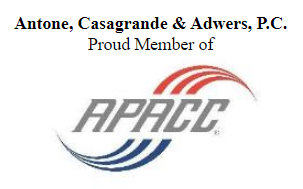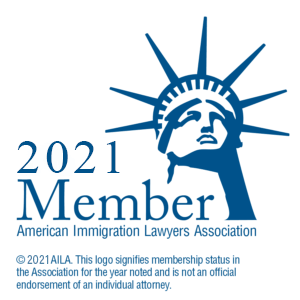In most instances, a foreign national seeking to obtain U.S. permanent residence through employment must be the beneficiary of a certified permanent labor certification issued by the U.S. Department of Labor (DOL). A certified labor certification is filed by the employer using ETA Form 9089, Application for Permanent Employment Certification, through the DOL’s Program Electronic Review Management system or PERM. The immigration lawyers in our Michigan office have prepared many applications utilizing this process. The purpose of obtaining a certified labor certification is to ensure that there are no sufficient U.S. workers able, willing, and available and qualified to accept the job opportunity, and that the employment of the foreign national will not displace U.S. workers or adversely affect the wage or working conditions of U.S. workers. The labor certification application requires the prospective employer to test the labor market by conducting a pattern of recruitment to determine whether there are any qualified and available U.S. workers who are immediately available to accept the offered position at the prevailing (or average) wage for the geographic area. An outline of the process for filing a labor certification application, follows.
First, the U.S. employer is required to obtain a prevailing wage determination (PWD) from the DOL, which is based upon the job offer, job duties, requirements for the position, and the geographic area in which the job is located.
After obtaining a PWD, the employer is required to post a printed, internal job notice for at least 10 consecutive business days. This notice must be posted between 30 and 180 days before filing the labor certification application. In addition to the job posting, the employer must use its standard in-house electronic and printed methods for advertising the position. Additional required recruitment efforts include placing a job order with the State Workforce Agency (SWA) and placing two Sunday newspaper advertisements. The SWA job order must be placed for a period of 30 days. The Sunday newspaper advertisements must be published in a newspaper of general circulation in the area of intended employment. The ads must be published within 180 days, but no less than 30 days before filing of the labor certification application.
Additional recruitment requirements apply to employers seeking to hire someone in a professional occupation (one that requires a bachelor’s degree or higher). If the occupation qualifies as professional, the employer must undertake three additional recruitment steps to those outlined above. The three additional steps must be chosen from the list provided in the regulations. The following are permissible recruitment options for professional positions: (a) job fairs; (b) the employer’s website; (c) job search website other than the employer’s; (d) on-campus recruiting; (e) professional or trade organizations (i.e., placing an advertisement in their newsletter or journal); (f) private employment firms that conduct recruitment; (g) an employee referral program that provides incentives; (h) campus placement offices; (i) advertisement in local and ethnic newspapers; (j) radio and television advertisements; and (k) web-page advertisements that are posted in conjunction with one of the mandatory print advertisements. All three additional recruitment options must take place no more than six months before the filing of the labor certification application; however, only one of the three steps may take place within 30 days of filing.
In order to prepare the advertisements, care must be taken to draft an accurate description of the job as well as the skills, education, and experience required to satisfactorily perform the duties. The advertised requirements for the position must meet two criteria. First, the skills, education, and/or experience must be the actual skills, education, and/or experience required to satisfactorily perform the duties of the position. In other words, one cannot require certain skills or experience simply because the foreign national possesses those skills or experience. Second, the foreign national must have possessed the required skills, education, and/or experience prior to joining the employer who is filing on his or her behalf.
In establishing the duties to be performed by the foreign national, one must generally follow the DOL guidelines for different occupational categories. These guidelines determine the amount of education and experience that can be required for a given occupation. Requirements that exceed the range established by the DOL are considered “unduly restrictive,” meaning that the sole function of these requirements is to reject U.S. workers who are otherwise qualified for the position. An employer, however, may require experience and education in excess of the range established by the DOL by showing “business necessity,” which means that the requirements bear a reasonable relationship to the occupation in the context of the employer’s business and are essential to performing, in a reasonable manner, the job duties as described by the employer.
After the advertisements and job orders are placed, the employer may receive resumes from interested applicants and a determination is made whether there are any qualified and available U.S. workers who are willing to accept employment at the prevailing wage. Upon completing the review and evaluation of the submitted resumes, and before submitting the labor certification application, the employer is required to prepare a recruitment report for its internal files. The report must document the recruitment steps undertaken and the results achieved. The employer must retain the recruitment report and all supporting documentation, including evidence of the advertisements and the resumes received in response to the recruitment effort, for a five-year period starting from the date of filing the labor certification application.
If the employer determines that there are no qualified and available U.S. workers for the offered position, then the recruitment has been completed and the Labor Certification Application, Form ETA-9089, can be submitted electronically. If the application is not selected for an audit, DOL will certify (approve) it within approximately 4 to 12 months from filing. A certified application must be immediately signed by the employer who will then submit the certified and signed application along with the immigrant petition (I-140) to U.S. Citizenship and Immigration Services (USCIS) to sponsor the foreign national for an immigrant visa.
If an application is selected for an audit, the employer will receive an audit letter from the Certifying Officer (CO) of DOL asking the employer to provide certain documentation and specifying a reply date of thirty days from the date of the audit letter. If the reply date is not met or if the CO does not provide the employer with an extension, then the application will be denied. An audit can be triggered randomly or based on information provided in the employer’s PERM application.
If the PERM application is certified and the employer wishes to proceed to the next step – filing the employment-based immigrant petition (Form I-140) with USCIS, the foreign national will be required to provide documentation to establish that he or she met the advertised requirements for the position on the date that the PERM application was filed. Accordingly, the foreign national will be required to provide copies of college degree(s) with transcripts and employment confirmation letters that discuss their position and duties with a particular company where they are or were employed and the skills used in carrying out these specific duties.
To file the immigrant petition, the employer must also establish that it has the ability to pay the foreign national at least the prevailing wage as determined by the PWD. To meet this threshold requirement, the employer must provide copies of its corporate tax returns or an audited financial statement for the year when the labor certification was filed and subsequent years. If the employer has over 100 employees, the USCIS may accept a letter from the employer certifying that it has the ability to pay the proffered wage.
The immigrant petition must be filed within 180 days of the date that the PERM application is certified.
We would be happy to discuss the PERM process as it relates to your organization and/or a foreign national seeking to obtain permanent residence through an employment-based immigrant petition. Call today to get started.









